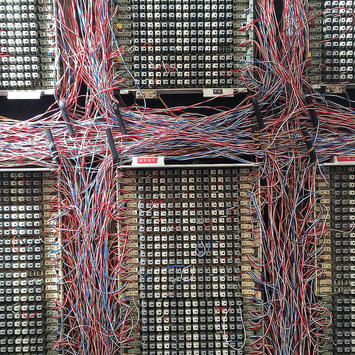
What distinguishes a ‘smart city’ from one that merely possesses smart technology? At the basic level, ‘smart’ implies a threshold level of technology uptake. Cities with fast internet, straddling buses, and driverless police cars could be considered smart. However, if technology is the only prerequisite, smart is neither revolutionary nor interesting. It is time to move towards a more enlightened understanding of what makes a city smart.
Most smart city definitions fail to articulate how disparate technologies mutually support goals beyond efficiency. If policies are holistic and integrated, technologies should be as well. Integration is not the final objective, though: it represents only the starting point for developing broader strategies to equitably distribute technology benefits and raise living standards. As such, the fundamental question for planners and policymakers is not how to optimize components of the system, but how to ensure that the overall system delivers on the promise of its potential.
In 2014, I introduced what I called a constraint theory of governance. Based on the concept of throughput optimization in the field of operations management, constraint theory posits that efforts to maximize the speed or capacity of individual production stages do little to improve the speed of systemic throughput. This is more colloquially known as the weak-link phenomenon. The concept describes a common management folly that prioritizes efficiency at one stage of production while inventories accumulate at other stages and overall progress stagnates.
So it is with governance. The improvement of a single policy stage (e.g. consultation, design, or implementation) is fully realized only when other stages are proportionately reformed. In an interlinked policy system, achieving complementarity among stages is crucial for improving throughput – as measured by the delivery speed and durability of policy initiatives. More broadly, according to the constraint theory of governance, reforms applied across rather than within functional areas are the only means to generate transformative progress in outcomes.
The constraint theory of governance applies also to smart city systems, in which output is neither a product, as in business, nor a policy, as in governance. Rather, outputs can be seen more broadly as outcomes defined by political, social, and economic progress. Technology is only one component of this complex system; it is the butter, not the bread. Operating within the broader context of a dynamic society and body politic, the power of smart city technology is dependent on strategic and functional integration of urban systems. In other words, technology is only as effective as the governance priorities and capabilities underlying it.
Seemingly disparate technological capabilities can become increasingly interdependent over time. According to the late scientist John Henry Holland, complex adaptive systems are characterized by the presence of components that learn through interaction. This is a useful metaphor for the potential of smart city systems. While much focus has been given to individual components, technological convergence requires a systems perspective. Benefitting from both network growth and scientific progress, smart city systems can shape the collective capabilities of once silo-bound technologies into a continuously evolving whole. This self-correcting mechanism is valuable in environments where policy and planning systems are encumbered by persistent bugbears like political patronage and ideological territoriality.
In smart cities, order is needed for planners to channel technological capabilities productively, while chaos provides a dynamic and flexible space for business and social innovation to 'breathe.' The sterile and the organic exist in paradoxical equilibrium. However, even politically progressive cities are sometimes unable to hold this balance, as in the recent controversy about rideshare services Uber and Lyft in Austin, Texas. Such cases are evidence that deeper thinking is needed about how to anticipate and manage the disruptive effects of smart city systems.
Appreciating the complex and paradoxical dimensions of smart cities can help improve human welfare, particularly when leaders and citizens look beyond efficiency. Rather than optimizing discrete goals, the new architecture of smart cities should be oriented towards broader social and political outcomes. Planner and academic Murtaza H. Baxamusa recently stated, “To be effective, urban planning needs to dig deeper than obscure code, pretty pictures and jumbling data. It needs to make a difference in the lives of all people.”
Smart cities have focused long enough on finding cool ways to do the same old things. Lest they be relegated to the garbage heap of worthless miracles, new generations of urban technologies can earn their keep with lower costs, faster delivery, and improved services, all indicators of efficiency. However, as I recently wrote, “All that computes is not progress.” While technology improves certain aspects of business and governance, its broader potential should not be undersold. The new 'smart' implies extension of opportunities to the disadvantaged, broadening of political participation, and enabling of social forces to shape urban space for the greater good.
Kris Hartley (www.krishartley.com) is a Visiting Research Fellow at the University of the Philippines Diliman, and a PhD candidate at the National University of Singapore, Lee Kuan Yew School of Public Policy.
Flickr photo by Nicolas Nova: Smart City Infrastructure












